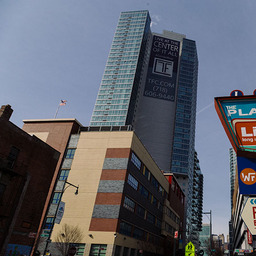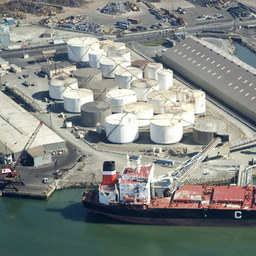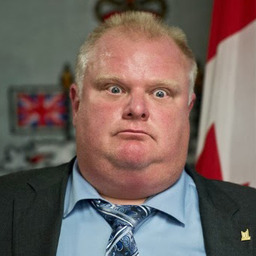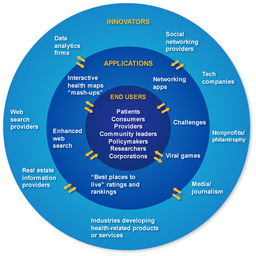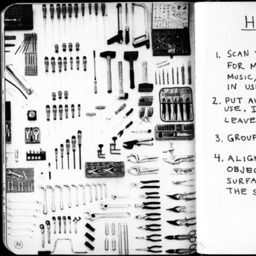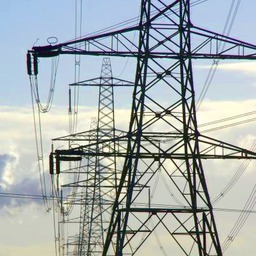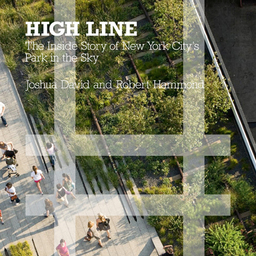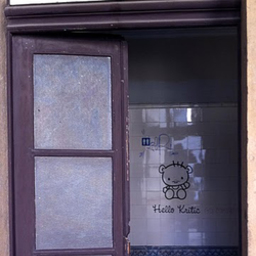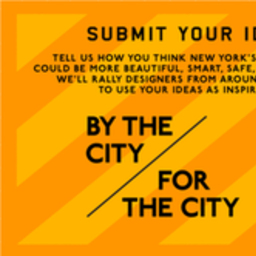Observed
Heading to
NY Design Week?
Here’s the itinerary. (It’s May 16-23.)
Ann Pizzorusso, a geologist and Renaissance art historian, says she
has finally solved one of the art world’s enduring mysteries: where in the world was the Mona Lisa when she was sitting for Leonardo da Vinci? It took her dual expertise to find the clues that were there all along. “Geologists don’t look at paintings, and art historians don’t look at geology,” she says.
Three chatbots
explain themselves.
Here’s the first
design proposal to replace Baltimore’s Francis Scott Key Bridge, which collapsed last March. It's from an all-star team: Carlo Ratti Associati — the architecture firm led by architect and MIT professor Carlo Ratti — WeBuild, an Italian construction group, and Michel Virlogeux, a French structural engineer known for his work with Foster + Partners designing the
world’s tallest bridge. Their version has a longer span, a raised clearance, and the aesthetic of an enduring landmark. “The team hopes to deliver a bridge that is more contemporary visually and is also safe and durable for decades to come.”
Design as an act of
neighborly pettiness.The Biden Harris campaign is looking for a
design lead and a
graphic designer. (Both positions are full-time and based in Wilmington, Delaware.)
Mexico City is facing a desperate but unsurprising water crisis. But, Javier Sánchez, founder of architectural firm JSa, says
that by returning to ancient water technologies—like efficient rainwater harvesting—homes can be both beautiful and water-self-sufficient.
Climeworks, a Swiss start-up, has just unveiled Mammoth, the world’s biggest carbon-absorbing plant. Located in Hellisheidi, Iceland, Mammoth is designed to remove 36,000 metric tons of carbon each year, the equivalent of taking 8,600 cars off the road. “It’s a drop in the bucket, but it’s a much bigger drop in the bucket than any we’ve seen so far,” Klaus Lackner, who heads the Center for Negative Carbon Emissions at Arizona State University,
tells the Washington Post. The Cybersecurity and Infrastructure Security Agency (CISA) has instituted a voluntary “
Secure by Design” pledge for enterprise software makers. It affirms they are improving, documenting, and publicly sharing a host of security protocols, fixes, and best practices. All the cool kids seemed to have signed up.
Veterans
are now playing an essential role in helping VA health centers design new facilities by piloting design simulators and assessing physical mockups before construction begins.
It's hard out there for a young designer,
says Nendo founder Oki Sato. "You have to think about materials and the process — not just human-centered, but for the planet — and we have to think about how it will be recycled in the future as well.”
Fast Company’s global design editor, Mark Wilson,
sat down with Fuse Project founder Yves Béhar, Neri & Hu Design cofounder Rosanna Hu, IKEA CEO Jesper Brodin, and Mattel Chief Design Officer Chris Down and asked how AI was impacting their businesses. “The era of designing general devices and or apps that work the same way for everyone is going to be over soon,” says Béhar. Good ideas come from teams, but in the future, says Hu, “we might be able to get something in three minutes.” But Brodin asked the big questions. “What are the risks to humanity? How are we impacting truth?”
At the screening of Gary Hustwit’s new documentary,
Eno, visionary
musician Brian Eno said: "Algorithms cannot be in the hands of individuals like Elon Musk and Mark Zuckerberg." It’s a capitalism thing. “Well, one thing that is really, really clear to me is that whoever designs the algorithms, designs the future. And it’s completely terrifying to me that the design of those algorithms is, in fact, almost 99 percent made by a few young Americans who want to make a lot of money. If profitability is the main goal of the design, then we’re going to end up with the same kind of shit that we got from social media.”
Did you know that since 1956, each Eurovision host broadcaster has had to come up with its own logo? Some are generic and forgettable, while others are more professional (and maybe also forgettable) (and speaking of forgetting, Istanbul completely forgot to design one in 2004, which is where at least one generic stand-in proved useful). As a suite of visual emblems, they're fascinating as a collective snapshot, sitting at the intersection of typography, globalism, and the amped-up TV culture of the music business. Among our favorites is the 2017 logo, which claims to have taken its inspiration from a traditional Ukrainian necklace, or
namysto—considered to be a protective amulet and a symbol of beauty and health—and in this case, a way to honor and celebrate
diversity.
Wonderful
job opportunity—perhaps for a newly-minted MFA grad—working with the amazing people at
Cita Press, where they celebrate the spread of culture and knowledge by publishing the writings of women authors whose works are open-licensed or in the public domain. Through its library of collaboratively designed free books, Cita honors the principles of decentralization, collective knowledge production, and equitable access to knowledge.
Struggling to figure out what to watch on Netflix? You're not alone! That's a challenge that still keeps
Steve Johnson, Netflix’s VP of design, up at night.
How does color function In factories, schools, and hospitals? In the 1950s,
it functioned like this. (Part Two is
here.)
As if Prime Minister Justin Trudeau
didn't have enough on his plate, public response to a new identity program sparks controversy (and ridicule). "It looks like a moose getting a prostrate exam!" one person noted. "It looks like a Minecraft character milking an elk!" observed another. Behold: the communications kerfuffle around the design of a
new logo for the Canadian Army.
Every object we bring into the world has a contextual backdrop, and every design decision is a compromise.
How long should objects last? Charlie Humble-Thomas—a student at the RCA in London—ponders the question of what he calls “conditional longevity”.
The United Methodist Church has reversed its denomination’s anti-LGBTQ policies and teachings and lifted all bans on same-sex marriage and gay clergy. The fight to allow same-sex marriage and gay clergy has been part of a painful debate within major Protestant denominations in the U.S. for nearly fifty years.
Click through for a timeline of major milestones of the last five decades.
AAPI History Month turns 45 this year.
Most
people credit its establishment to Jeanie Jew, a fourth-generation Chinese American and a co-founder of the congressional Asian-Pacific staff caucus. Her grandfather had helped build the
Transcontinental Railroad in the 1800s and then was killed amid anti-Asian unrest, a story which moved her colleagues on the Hill. In 1979, with support from California Rep. Norm Mineta and Hawaii Senators Daniel Inouye and Spark Matsunaga, President Jimmy Carter
issued a proclamation designating the first week of May as “Asian/Pacific American Heritage Week.”
The impossible dilemma of Black female leadership. “In predominantly White spaces, a Black woman is expected to code-switch, mimic White culture, and either explicitly or implicitly affirm harmful propaganda about Black people, in order to signal that she can be trusted by the establishment,” says Shauna Cox in
Nonprofit Quarterly Magazine.Weimar, Germany—the city that was home to both Germany’s post-1918 government and the first (of three) Bauhauses—has taken the courageous step to re-examine the school’s relationship to National Socialism. Organized by the
Klassic Stiftung Weimar and running from May 9 through mid-September, three exhibitions take on this immense subject:
The Bauhaus As a Site of Political Contest, 1919-1933, will be at the Museum Neues Weimar;
Removed – Confiscated – Assimilated, 1930/37 at the Bauhaus Museum; and
Living in the Dictatorship, 1933 -1945 at the Schiller Museum. A review in today's
Guardian looks at the complexity and coordination of this trio of shows, and delves into the historical nuance—and torment—of its political and artistic history.
Design Reviewed is dedicated to digitally preserving graphic design history and documenting the expansive visual culture of the last century. The archive is the work of one extremely dedicated man: his name is Matt Lamont (and you can get a little taste of his obsession
here).
Providing tactical strategies and creative support to tackle the complexities of balancing intuition and taste, technical and personal capability, strategic business decisions in design work and the demands of modern brand building, Matt Owens's
A Visible Distance: Craft, Creativity, and the Business of Design speaks to students, educators, and professionals.
Opening in 2025, the Boston Public Art Triennial will be curated by
Pedro H. Alonzo and
Terese Lukey and is free and accessible to all. More
here.
And for your Friday enjoyment—
Designer! (A poem by Dorothy Chan.)
In Iran, the ancient
qanat system enabled irrigation in desert environments, allowed for agriculture to flourish, and fostered community cooperation. “They are based on a huge shareholding system that requires different people living in a region to work together and use the water resources available," observes Negar Sanaan Bensi, a lecturer and researcher in the faculty of architecture at the Delft University of Technology in the Netherlands. With global warming sending temperatures soaring, rethinking these cooling tunnels represents a huge design opportunity, and hints at a promising future for community-building. (Also:
they're already using it in Spain.)
California Governor Gavin Newsom—long criticized for failing to address his state’s $73 billion budget deficit, overspending and lack of focus on local issues—asks for public input on
the design of a state coin. Hilarity (and, well, yes) humiliation ensues.
How does governance impact the preservation of critical, cultural, and historical artifacts, including, and especially, our cherished institutional archives?
John Thackara has some ideas.
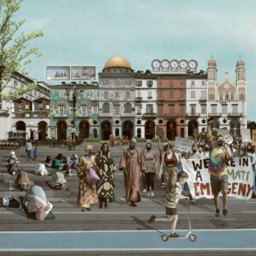


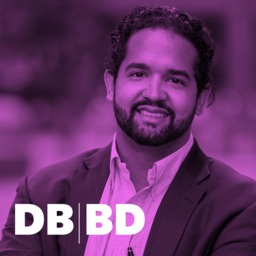

_m.jpg)
